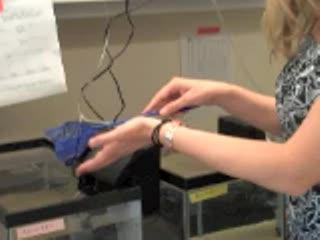"So there is an interesting conundrum," Morgan says. "What are these myelin-associated genes doing in an animal that doesn't have myelin, and yet is good at regeneration? It opens up a new and interesting set of questions, " she says. Addressing them could bring insight to why humans lost the capacity for neural regeneration long ago, and how this might be restored.
At present, Morgan and her collaborators are focused on analyzing which genes are expressed and when, after spinal cord injury and regeneration. The whole-genome sequence gives them an invaluable reference for their work.
Morgan, Bloom, and Buxbaum collaborate at the MBL through funding by the Charles Evans Foundation. Bloom is based at the Feinstein Institute for Medical Research/Hofstra North Shore-Long Island Jewish in New York. Buxbaum is from Mount Sinai School of Medicine in New York.

Jennifer Morgan and Ona Bloom are using an ugly fish with a beautiful spinal cord, the sea lamprey, to study mechanisms of recovery from spinal cord injury at the MBL in Woods Hole, Mass.
(Photo Credit: Diana Kenney/MBL)

The sea lamprey (Petromyzon marinus) is an aggressive parasite that is considered a pest in many regions, including the US Great Lakes. An ancient vertebrate, its lineage diverged from that of humans about 500 million years ago. The lamprey is now our earliest vertebrate ancestor to have its whole genome sequenced and assembled.
(Photo Credit: New York State Department of Environmental Conservation.)
Source: Marine Biological Laboratory